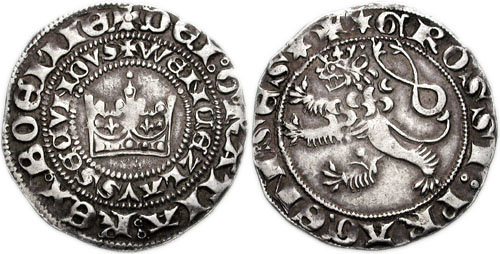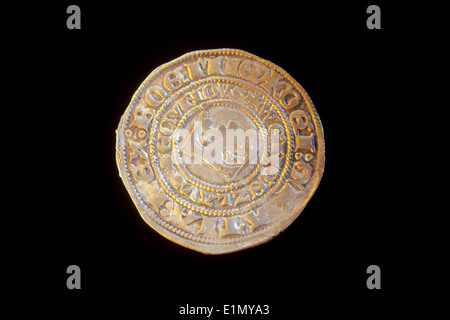Free Suggestions For Laser Processing Czechoslovakia Coins
Wiki Article
What Can A Model Made Of Plaster Be Used To Create An Actual Representation Of The Gold Coin?
It is crucial to remember that the artist or designer will use the gold medal or coin design to guide. This design may be a simple sketch created with a pencil, or it may be an image created digitally by using graphic software. Other materials such as clay and wax may be utilized.
Plaster preparation - Water is added to the plaster in order in order to make it usable. It's important to have a consistent mixture that's free of lumps.
The base is where the maquettes will be created. This base may be a wooden plank or a flat surface to provide stability.
Sculpting Maquettes - The artist starts by sculpting in the gold design by using it as a model. The process involves shaping the plaster to create the relief or 3D representation of the coin or medal.
Refinement and Detailing- The artist is focused on bringing in details while refining the contours and ensuring accuracy in the proportions and details of the design. Precision and attention to details are required at this stage.
Giving the plaster time to dry out and setAfter a sculpture is completed, it requires some time to dry and set. This will allow the maquettes time to harden and retain their shape.
After drying, it is finished and smoothed to eliminate any imperfections, bumps or rough areas.
Sealing and Preserving- To protect and protect the maquette, and to make it ready for other processes such as scanning and molding, you can apply a sealant or protective layer on its surface.
The final plaster maquette functions as a tangible, 3D depiction of the gold medal or coin design. The maquette of plaster is used to create molds for mass production as well as to serve to serve as a source material to guide other steps of the manufacturing process. Take a look at the most popular Prague Mint gold medals plaster molds more recommendations. including silver nickel, olympic games gold medal, gold penny, kruger rand, angel coin, gold buffalo coin, buy gold silver, gold medals, buying silver, 1 ounce gold and more.

Why Do Dies Used For Striking Gold Coins Or Medals Undergo Procedures Of Vacuum Hardening?
The hardening by vacuum of dies that are used to make gold coins and medals is accomplished by exposing them to high temperatures under controlled conditions inside a vacuum chamber. Here's a brief outline of the vacuum hardening procedure for die preparation and Cleaning.
Dies used for making coins or medals are made by making sure they are clean and free from any residues or contaminants.
Loading in Vacuum Furnace
Die dies can be inserted in a vacuum oven that creates a vacuum within the heat-treating area.
Evacuation via Airplane
The vacuum oven removes all air from the chamber making it a clean space free of oxygen as well as other gases. This is done to avoid the formation of oxidation and to guarantee uniform heat treatment.
Heating Phase
The furnace is heated up to the ideal temperature needed to harden the dies. The range of temperature will be determined by the material type and the hardening process.
Soaking at high temperatures
The dies are kept at a high temperature for a specified time which allows the material to reach and retain the desired hardness as well as the metallurgical structure.
Quenching or Cooling
After soaking, the dies are rapidly cooled or quenched using specialized methods. This rapid cooling process helps keep the desired hardness and strength in the material.
Tempering (Optional).
In some cases, tempering can follow the hardening process. Die dies are heated to a lower heat to lessen internal stress and improve the toughness of the die, while preserving its hardness.
Quality Control and Inspection-
The dies that have been hardened are inspected and tested to ensure that the dies satisfy all of the specified requirements.
Post-Treatment Handling-
Die dies are then later subjected to further treatment like polishing or coating prior to being used for coin or medal striking.
The vacuum hardening procedure enhances the durability, wear resistance and lifetime of the dies used to create gold coins or medals. This process produces a controlled and safe environment free of airborne contaminants to guarantee consistent and reliable hardening. It also contributes to the quality of the minted product. Have a look at the recommended vacuum hardening Czechoslovakia gold coins site info including old coins, sell gold silver near me, ngc grading, gold one dollar coin, 5 dollar gold coin, 24 karat gold coin, gold silver bullion, gold bars for sale near me, gold morgan dollar, gold buffalo and more.

Why Are Gold Coins And Medals Cleaned By Hand?
Hand-polishing dies ensures smooth and perfect surface for gold coins and other medals. The smoother the surface the more precise the reproduction of fine details and intricate design features onto the coins or medals.
Improved Quality of the Coin or MedalA die that is polished ensures that the struck coins or medals are sharp and have well-defined edges, details, and relief. This improves the overall aesthetics and quality of the finished product.
Reduced Wear- Polishing reduces wear and friction in the process of striking. A smooth surface on the die minimizes the chance of irregularities or defects on the medals struck or coins caused by rough surfaces.
Consistency in Striking - Hand-polished dies offer a consistent striking surface, ensuring uniformity in the process of minting. It is important to maintain the precision, depth and quality of the design across multiple coins or awards.
Longevity of the Dies- Well-polished dies are less likely to be damaged or wear in the striking process. Dies are more durable and long-lasting, which allows for more strikes to be achieved without sacrificing quality.
Precision and Accuracy. Hand polishing enables engravers precisely fine-tune, refine and even perfect specific areas on the die. The details will be accurately reproduced on the struck coin or medal. This level of precision is crucial to the precision of the final product.
Quality Control - Polishing is an element of a quality control process. The inspection of the die during hand polishing allows for the identification and rectification of any inconsistencies or defects before striking.
Surface Finish- Polishing may impart specific surface finishes or textures, enhancing the visual appeal or adding distinctive characteristics to the coins or medals.
The careful hand-polishing of the dies that are used to make gold coins and other medals is critical in ensuring that the products are precise and visually pleasing. This is essential to the appearance, longevity and the consistency of the final product. Take a look at the most popular hand polishing Prague Mint gold coins site tips. including euro coins, silver and gold buyer near me, gold and bullion, 24k gold coin, cost of a gold bullion bar, gold one dollar coin, british sovereign gold coin, 1 0z gold price, gold eagle price, silver double eagle and more.

How Is Gold Fed Through The Coin Presses, And Then Stamped With High-Pressure While Minting?
During the minting process, gold blanks are fed into coin presses, where they are stamped under pressure to turn them into coins or medals. Here's a quick overview of loading blanks.
Gold blanks, which have been previously checked and cleaned for quality, are placed into a feeder system, which is connected to the coin press. This feeder system guarantees an ongoing flow of blanks.
Feeding Blanks Through the Press
The feeder system directs the blanks one after another into the chamber for striking of the coin press. This guarantees the exact placement of each blank for stamping.
Alignment and Positioning
The blanks are placed and aligned inside the striking chamber of the press to ensure that they are perfectly aligned to be used for stamping.
Striving under High Pressure
Coin presses gold blanks using the highest pressure using two dies, one stationary and the other moving. The stationary die is the negative design impression, while the moveable die is known as the Hammer.
The die moves and strikes the blanks with great force. This transfers the design onto the surface of the blank. The die's pressure creates the design, as well as the raised relief.
Striking repeatedly is optional.
In order to create designs or images that are sharper and more clear, several strikes can be applied to high-quality coins or collectible editions. Each strike increases the fine details on the outside of the coin.
Ejection and collection
When they have been struck by hand, the medals and coins are then thrown into tray. They are checked to ensure quality control and ensure that stamped designs meet all standards and criteria.
Post-Processing-
In accordance with the design or mint specifications Coins and medals may be subjected to additional treatments like edge lettering or reeding as well as post-strike treatments.
Stamping gold blanks under high-pressure is essential as it transfer the desired design onto the gold blanks. They are then turned into finished medals or coins ready for collection, circulation or for commemoration. Precision is required, as any slight deviation in the pressurization or the alignment of the gold-plated blanks may affect the quality and look of the finished product. Take a look at the most popular minting Czechoslovakia gold coins blog advice. including silver double eagle coin, golden and silver, olympic games gold medal, 1 oz gold eagle, gold dollar coin, 1 ounce gold, 5 dollar gold coin, one oz of gold, coin gold silver, saint gaudens gold coin and more.
